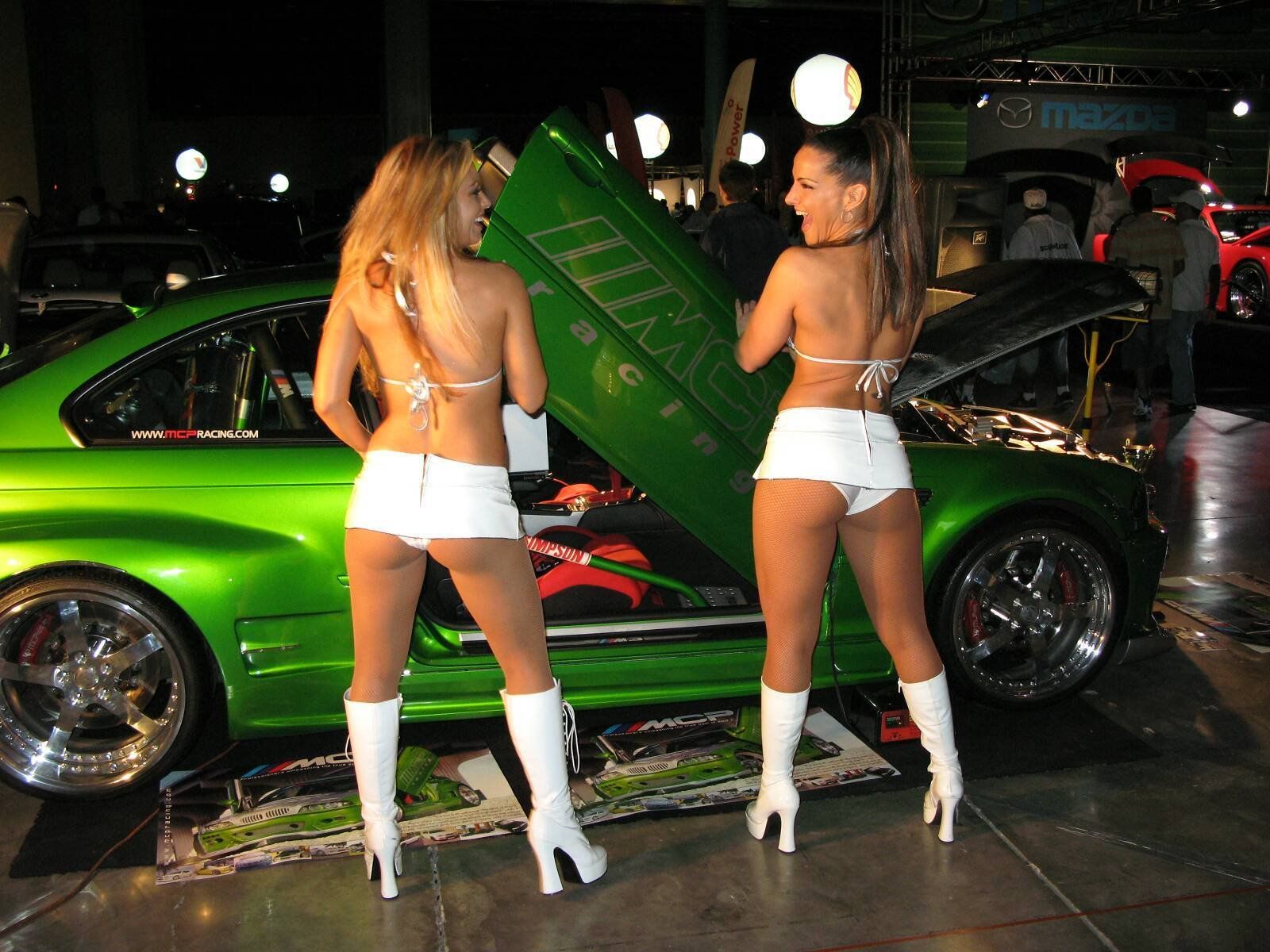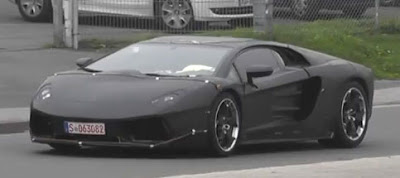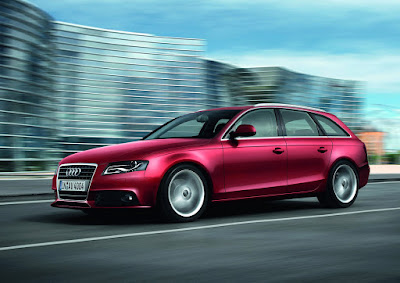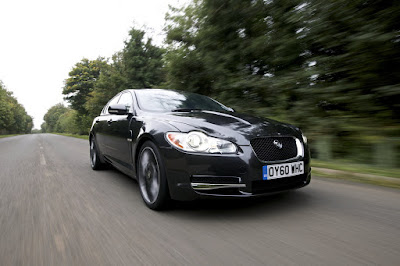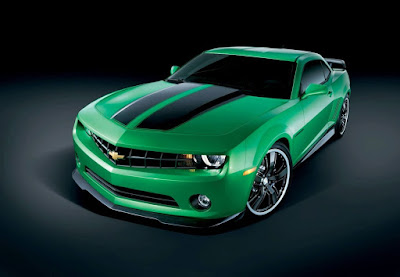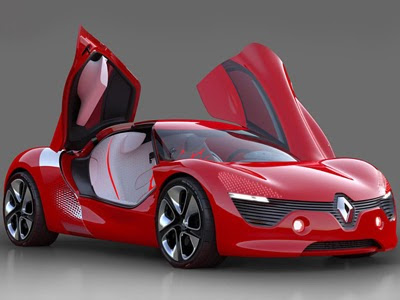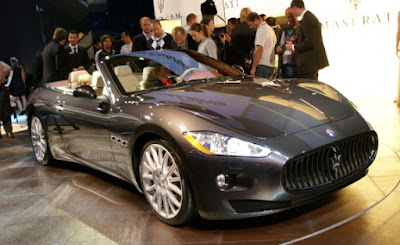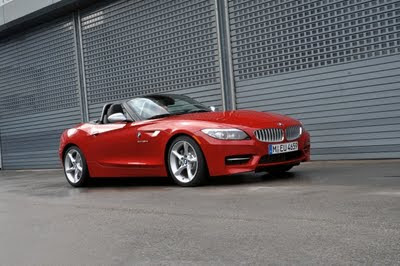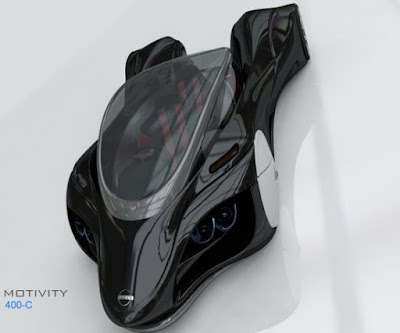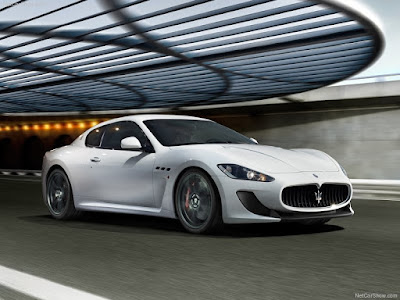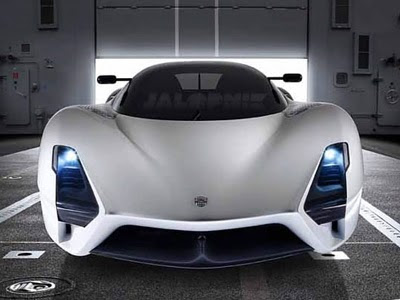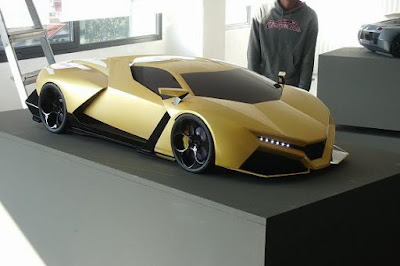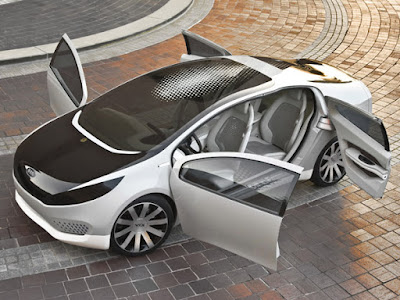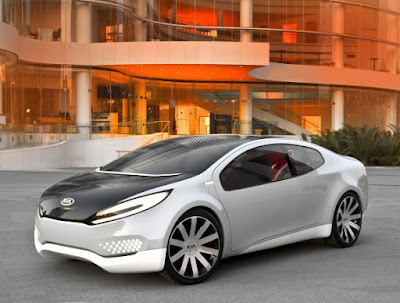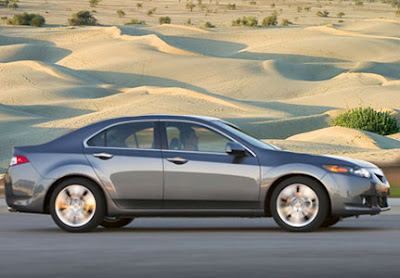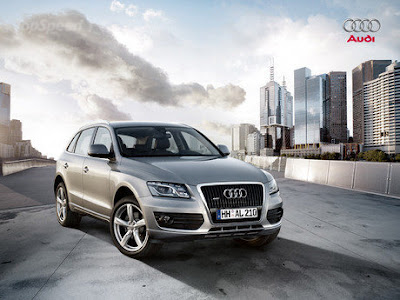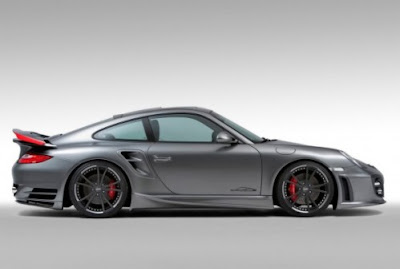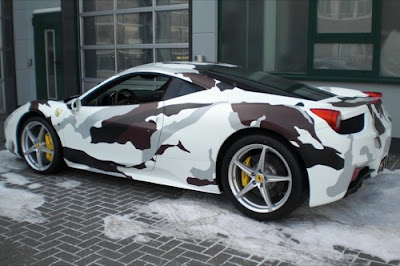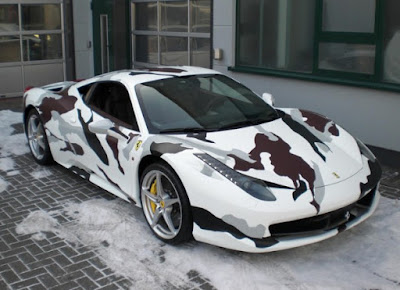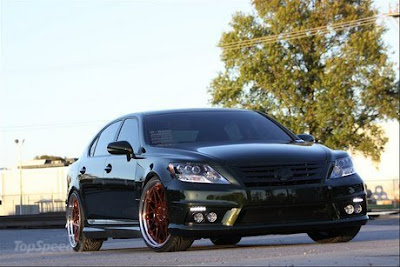|
|
|---|
Wednesday, December 15, 2010
The Subaru Impreza WRX is a turbocharged version of the Subaru Impreza, an all-wheel drive, four-door passenger vehicle. It is available as a sedan or wagon. Originally introduced in 1992 in Japan, then shortly afterward in New Zealand, Australia and Europe, the WRX had a turbocharged flat-4 2.0L (then later a 2.5L), Subaru Boxer engine. Compared to the base Impreza, the WRX has a turbo-charged drivetrain, wider low-profile tires, larger brakes, and firmer, higher-quality suspension components.The Impreza WRX was first sold in North America in 2001 as a 2002 model year.
There have been seven noted versions of the WRX. The STI versions were marketed with consecutive numbers. Another way to determine the version of a WRX was to look at the chassis code. All WRX sold between 1992 and 2000 have the beginning chassis code of GC8 sedan or GF8 wagon; this is followed by a letter from A to G.
There have been seven noted versions of the WRX. The STI versions were marketed with consecutive numbers. Another way to determine the version of a WRX was to look at the chassis code. All WRX sold between 1992 and 2000 have the beginning chassis code of GC8 sedan or GF8 wagon; this is followed by a letter from A to G.





Tags : Subaru impreza wrx, Subaru impreza wrx sti,2005 subaru impreza wrx sti,subaru impreza wrx sti spec c type ra-r, subaru impreza wrx sti headlamp, subaru impreza wrx sti parts, 2002 subaru impreza wrx sti headlights, 2008 subaru impreza wrx sti 2.0-liter tires,subaru impreza wrx sti for sale, subaru impreza wrx sti t25
Labels: Subaru Impreza WRX
The Subaru Impreza STI, (formerly WRX STi, officially changed in 2006 to STI) is the highest standard-edition trim in the Subaru Impreza compact car line, produced by Japanese automaker Subaru.
In the late 1980s, Subaru created the Subaru Tecnica International (STI) division to coordinate development for the FIA World Rally Championship and other motorsports activities. After the company had grown, the division was used to create high-performance consumer versions of the Subaru Impreza WRX, an all-wheel drive car with a turbocharged boxer engine, leading to the development of the Impreza WRX STi. The Subaru World Rally Team has used a race-prepared version of the WRX STI as its rally platform since the model trim's creation.
In the late 1980s, Subaru created the Subaru Tecnica International (STI) division to coordinate development for the FIA World Rally Championship and other motorsports activities. After the company had grown, the division was used to create high-performance consumer versions of the Subaru Impreza WRX, an all-wheel drive car with a turbocharged boxer engine, leading to the development of the Impreza WRX STi. The Subaru World Rally Team has used a race-prepared version of the WRX STI as its rally platform since the model trim's creation.
Tags : Subaru impreza wrx, Subaru impreza wrx sti,2005 subaru impreza wrx sti,subaru impreza wrx sti spec c type ra-r, subaru impreza wrx sti headlamp, subaru impreza wrx sti parts, 2002 subaru impreza wrx sti headlights, 2008 subaru impreza wrx sti 2.0-liter tires,subaru impreza wrx sti for sale, subaru impreza wrx sti t25
Labels: Subaru impreza wrx sti
Monday, November 15, 2010
Lamborghini is going to introduce Lamborghini Jota in 2012 which is now under testing and performance analysis . Lambo hasn’t reviled any details of Jota officially . But it is almost clear that Jota will Replace the Murcielago . The Jota will be much more fuel efficient than the Murcielago. The new Lambo Jota is coming with all new V12 direct injection engine which will be able deliver a huge power more than Murcielago and less than 700 Bhp .
Apart from using Steel chassis like Murcielago Jota is coming with light weight body which is build in collaboration with Aircraft manufacture Boeing . First Lamborghini’s plan was to build the body with carbon fibers and due to the huge expense they dropped that idea. Also one important report is that Lamborghini Jota is coming with pedal shift manual transmission. Through this modifications Lamborghini is aiming reduced emission and improved efficiency up to a better level.
Lamborghini hasn’t announced the price details and date of introduction of Jota till now.
Saturday, November 13, 2010
Chrysler has unveiled its new mid-sized challenger to rival the Camry, Accord and Chevy Malibu. Named 200, this younger brother to the 300 kills off the Sebring nameplate and will go on sale as a 2011 model. Fiat now owns Chrysler, but the Sterling Heights, Michigan built 200 isn’t a reskinned Italian car.
Described as a car that appeals to "customers that want style and substance, all at a surprising value", the 200 is based on the third-gen Sebring, which made its debut in 2007, but with heavily revised styling that makes it appear much more handsome than before.
New bits include front and rear fascias and fenders, grille featuring the new Chrysler winged badge, hood, rear decklid and exterior mirrors, new projector headlamps and fog lamps, new LED taillamps and a LED centre high-mounted stop light. The rear end clearly apes the Jaguar XF.
The 200 will be powered by the 2.4-litre four-pot "World Engine" mated to either a four-speed or six-speed automatic gearbox. The V6 option is filled by the company’s 3.6-litre Pentastar engine mated to a six-speed auto.
Chrysler says that ride and handling has been improved thanks to stiffened body mounts and a softer ride rate, improved suspension geometry with a raised roll centre and a new rear sway bar. NVH has been "extensively upgraded" from the old car as well.
Labels: Chrysler
Friday, November 12, 2010
2011 Infiniti EX Features New 7-Speed Automatic, 18-inch Alloy Wheels and Other Refinements
– Blind Spot Warning System, 19-inch Wheels Also Available for New Model Year –
Infiniti today announced the release of the revised 2011 EX crossover SUV, which is on sale now at Infiniti retailers nationwide. Major revisions for 2011 include:
* New 7-speed automatic transmission (previously 5-speed) for improved fuel economy (AWD) and performance
* Standard 18-inch wheels and tires (previously 17-inch)
* New white color scheme for gauges and LCD instrument display
* Standard Dual Zone Automatic Temperature Control (previously on Journey models only)
* Three new exterior colors: Arctic Blue, Midnight Garnet and Graphite Shadow
* Moonlight White exterior color now available with Chestnut interior
* Revised Premium Package combines previous Bose® and Around View® Monitor Packages
* Previous Premium Package becomes the Deluxe Touring Package
* 19-inch wheels and tires added as part of the Deluxe Touring Package
* Advanced Blind Spot Warning (BSW) system added to the Technology Package
The 2011 Infiniti EX continues to offer a sculpted exterior design matched with an engaging interior environment with standard leather-appointed seating. All models come equipped with an advanced 297-horsepower 3.5-liter V6 engine and the new 7-speed automatic transmission. Also available is Infiniti’s Intelligent All-Wheel Drive.
The EX’s long list of available features and technology includes RearView Monitor, premium audio system, power-up folding 2nd row seat, Lane Departure Prevention system (LDP), Intelligent Cruise Control (Full-Speed Range), Distance Control Assist (DCA) and Intelligent Brake Assist (IBA) with Forward Collision Warning (FCW).
2011 Infiniti EX Pricing
The 2011 EX is available in four models: EX35 RWD, EX35 AWD, EX35 RWD Journey and EX35 AWD Journey. The Manufacturer’s Suggested Retail Prices (MSRP)* are:
Model Engine/Transmission MSRP
EX35 RWD 3.5-liter V6 / 7-speed automatic $34,150 USD
EX35 Journey RWD 3.5-liter V6 / 7-speed automatic $36,350 USD
EX35 AWD 3.5-liter V6 / 7-speed automatic $35,550 USD
EX35 Journey AWD 3.5-liter V6 / 7-speed automatic $37,750 USD
About Infiniti
Infiniti offers a full line of luxury performance automobiles that inspire at every turn, including the G Coupe, Sedan and Convertible, M sedan, EX and FX crossovers, and the QX full-size SUV.
Thursday, November 11, 2010
Audi boosts efficiency again: A4 consumes just 4.4 liters per 100 km (53.46 US mpg)
* Sedan emits 115 grams of CO2 per kilometer (185.07 grams per mile)
* Powerful two-liter TDI with 100 kW (136 hp) and 320 Nm (236.02 lb-ft) of torque
* Potent technologies from the modular efficiency platform
Audi is further improving the efficiency of its models. Starting immediately, two new versions of the best-selling A4 that consume less fuel than ever are available in Germany. The sedan consumes just 4.4 liters of diesel per 100 km (53.46 US mpg) on average, with CO2 emissions of 115 grams per km (185.07 g/mile). These same figures for the A4 Avant are 4.6 liters (51.13 US mpg) and 120 grams (193.12). CO2 emissions have been reduced by four and nine grams, respectively, compared with the previous models.
Efficiency at Audi does not come at the expense of sportiness. The new models have powerful engines. Their two-liter TDI generates 100 kW (136 hp) and 320 Nm (236.02 lb-ft) of torque, the latter of which is available between 1,750 and 2,500 rpm. The sedan accelerates from zero to 100 km/h (62.14 mph) in 9.5 seconds on its way to a top speed of 215 km/h (133.59 mph); the Avant completes the standard sprint in 9.8 seconds and reaches 208 km/h (129.25 mph).
The two new A4 models use the technologies from Audi’s modular efficiency platform. All the gear ratios of their six-speed manual transmissions were lengthened slightly, and the forged 16-inch alloy wheels are shod with 206/60 tires that have been optimized with respect to rolling resistance. Aerodynamic tweaks to the body and a lower ride height improves the drag coefficient, while the on-board computer with efficiency program gives the driver tips about when to shift and on fuel-efficient driving.
Audi offers the two new efficiency top models in the A4 series in the Attraction trim line. The Audi A4 2.0 TDI (100 kW 115 g CO2/km) has a base price of €31,600; prices for the A4 Avant 2.0 TDI (100 kW 120 g CO2/km) start at €33,250.
Labels: Audi
2010 Mercedes-Benz F800 Style Concept is showing the future of premium automobiles from a new perspective, as the five-seat premium sedan combines highly efficient drive technologies with unparalleled safety and convenience features and an emotive design idiom, which interprets current Mercedes-Benz styling in line with the brand's hallmark attribute of refined performance.
The F800 Style has a spacious interior full of intelligent seating, operating, and display concepts. Another unique feature of the large sedan is an all-new multi drive platform, which accommodates electric drives with fuel cells (enabling ranges of almost 375 miles) as well as the use of Plug-in Hybrids that can drive for up to 18 miles solely on electricity. Both variants of the Mercedes-Benz F800 Style Concept therefore make locally emission-free mobility possible at the level of a premium-class automobile, while at the same time being fully suited for everyday driving and providing a dynamic driving experience.
A glance into the future of pioneering premium sedans
Within the 15.5-foot external length of the Mercedes F800 Style Concept, all of the components of the vehicle's efficient and environmentally compatible alternative drives (Plug-in Hybrid or fuel cell drive system) are installed in a space-saving manner in the engine compartment and the gaps within the chassis. Each of the drive systems takes up comparatively little space for the installation. This applies in particular to the electric drive with fuel cell, which has been enhanced by Mercedes-Benz to be compact and powerful. The front end's compact package was made possible through the consistent downsizing of all F-CELL components. As a result, the entire interior space is preserved and offers plenty of room for five occupants.
"For many decades now, our research vehicles have been turning pioneering concepts into reality and thereby setting future trends. We set a course on the large touring sedan segment in 2007, when we presented the F700," says Prof. Herbert Kohler, Head of E-Drive & Future Mobility and Chief Environmental Officer at Daimler. "Characteristic features of the Mercedes-Benz F800 Style Concept are its innovations, whose development is already close to the series production stage. This is true not only of the electric drive with fuel cells but also of the Plug-in Hybrid, whose components were taken from our modular system for electric and hybrid vehicles."
Mercedes-Benz F800 Style Concept with Plug-in Hybrid: Outstanding performance despite emissions of only 68 grams CO2 per kilometer
In combination with the very powerful Plug-in Hybrid drive system, the Mercedes F800 Style Concept is a very dynamic expression of the concept of "fascination and responsibility." Its drive unit consists of a V6 gasoline engine with an output of 300 hp with next-generation direct injection and a hybrid module with an output 109 hp so that it delivers a total power of around 409 hp. The lithium-ion battery with a storage capacity of >10 kWh can be recharged either at a charging station or a household power socket. Thanks to its powerful and high-torque hybrid module, in the city the Mercedes-Benz F800 Style Concept can run exclusively on electricity, therefore without generating any local emissions. Because it also has high torque right from the moment it starts, the vehicle has the same driving performance as a car with a V6 gasoline engine even when operating in electric mode. The Mercedes-Benz F800 Style Concept with the Plug-in Hybrid can run purely on electricity for up to 18 miles. The F800 Style research vehicle therefore marks a further important step in the creation of a market-ready Plug-in Hybrid. Mercedes-Benz will begin series production of the S500 Plug-in Hybrid with the introduction of the next-generation S-Class.
Due to its efficient drive system and a CO2 bonus for the battery-electric driving mode, the vehicle has a certified fuel consumption of only 2.9 liters of gasoline per 100 kilometers. This corresponds to extremely low CO2 emissions of only 68 grams per kilometer. However, thanks to its outstanding efficiency, the Mercedes-Benz F800 Style Concept equipped with a Plug-in Hybrid nevertheless has a driving performance comparable to a sports car (0-60 mph 4.7 s, top speed of 155 mph). When in electric mode, the Mercedes-Benz F800 Style Concept has a top speed of 75 mph, thus meeting the needs associated with long-distance driving.
Like the Mercedes-Benz S400 HYBRID introduced in the summer of 2009 and the Vision S500 Plug-in Hybrid, the powerful electric module (approx. 80 kW) of the Mercedes F800 Style Concept is completely integrated into the housing of the seven-speed transmission. The lithium-ion battery in the new research vehicle is located underneath the rear seat, where it takes up little space, creates a low center of gravity, and ensures maximum safety in the event of a crash.
The electric drive components in the Mercedes-Benz F800 Style Concept with the Plug-in Hybrid once again demonstrate the versatility of Mercedes-Benz' extensively scalable modular hybrid system. The hybrid system can be expanded in various ways, depending on performance needs and the area of application. On this basis, it is possible to combine hybrid modules and batteries of different performance ratings with fuel-efficient, high-torque gasoline and diesel engines. Examples range from the current mild hybrids all the way to Plug-in Hybrids that enable pure electric driving over long distances. In developing the Mercedes-Benz F800 Style Concept with Plug-in Hybrid, the Mercedes engineers specifically focused on improving the pure electric driving in urban traffic. Thanks to high power reserves, the F800 Style in e-mode easily masters all kinds of city traffic while producing no local emissions. With the new hybrid module, the top speed of the Mercedes F800 Style Concept with Plug-in Hybrid has been increased to 75 mph in electric mode compared to the Vision S500 Plug-in Hybrid. At the same time, it emits only 68 grams of CO2 per kilometer, compared to the latter vehicle's 74 grams per kilometer.
Flexible, secure, and fully suited to everyday use: The Mercedes-Benz F800 Style Concept with electric drive and fuel cell technology
The F800 Style also offers clean driving pleasure in the variant equipped with an electric drive based on fuel cell technology. The vehicle's electric motor develops around 136 hp as well as a strong torque of approximately 214 lb-ft. The fuel cell generates the traction current by chemically reacting hydrogen with oxygen onboard the vehicle, producing water vapor in the process as the only emission.
The components of the fuel cell drive are taken from the range of available e-drive modules, which Mercedes-Benz developed for a variety of different electric vehicles. These components, which are already installed in the limited edition B-Class F-CELL, can be used flexibly and are suited for a variety of different drive configurations. The Mercedes-Benz F800 Style Concept is an example of this, as it uses rear-wheel drive, in contrast to the B-Class F-CELL. The same components are also installed in commercial vehicles, with developments here being spearheaded by the new Citaro fuel cell bus, which is equipped with two of the F-CELL systems used in passenger cars.
The new Mercedes-Benz research vehicle has the fuel cell located in the front, while the compact electric motor is installed near the rear axle. The lithium-ion battery is located behind the rear seats and is protected as well as possible against the effects of accidents, as are the four hydrogen tanks. Two of the tanks are located in the transmission tunnel between the passengers, while the other two are underneath the rear seat.
Mercedes F800 Style Concept with further innovations for more comfort and safety
In addition to a multi-drive platform that is unparalleled for large sedans and the combination of different alternative drive technologies, the Mercedes-Benz F800 Style Concept features many other technological innovations, such as a new multi-function display concept and a human-machine interface (HMI) with a cam touchpad. The display shows many additional functions not typically found in conventional instrument clusters. The Mercedes-Benz F800 Style's display concept focuses for the first time primarily on electric driving functions.
HMI with cam (camera) touchpad for intuitive and precise operation
The new cam touchpad HMI is an intelligent expansion of the COMAND system. For many years now, Mercedes-Benz has been forging ahead with the development of innovative operating and display systems. A particularly user-friendly innovation is being presented in the Mercedes-Benz F800 Style Concept. The HMI unit here consists of a touchpad on the center console and a camera that records video images of the user's hand as it works the pad. The live image of the hand is presented in transparent form in the central display above the console. The user sees the contours of his or her fingers glide across the image without covering anything, thus ensuring that all of the functions of the currently used menu remain visible so that they can be easily operated by applying slight pressure to the touchpad. Pressing the display with one's fingers generates a feeling similar to that of touching laptop keys so that users know when they are carrying out specific actions.
The cam touchpad HMI unit recognizes finger movements on the pad surface such as wiping, pushing, turning, and zooming, thus enabling intuitive regulation of the climate control system, telephone, stereo and navigation systems, and Internet access. The unit enhances active safety as well, because it is extremely easy and convenient to use and therefore does not distract the driver as much from the actual task of driving. And unlike conventional touchscreens, the HMI cam touchpad does not get smudged with fingerprints.
Conventional touchpad units generally depict hand or finger positions only by a small point in the display. Their lack of precision makes it very risky to enter information while driving, because doing so diverts the motorist's attention too much from the road. By contrast, the HMI with cam touchpad can be easily and safely operated even while driving. Test subjects have confirmed that the HMI with cam touchpad is extremely easy and safe to use, particularly as a result of the transparent depiction of the hand.
Range on Map: Graphic range depiction during electric operation
Another very user-friendly innovation created by the Mercedes engineers is the "Range on Map" function, which shows the remaining possible travel radius during electric vehicle operation as a 360° depiction on a map. Should municipalities only permit purely electric automobile traffic in the future, the driver can determine whether the electric range of his or her vehicle is sufficient for the journey into and out of the urban area by means of the Range on Map function. The system provides this function by combining information on the current battery charge level with data from the navigation system.
In the new operating and display concept, Mercedes-Benz has created a solution that provides an unparalleled amount of information in a system of exemplary clarity. The engineers have thus achieved the goal of successfully developing a comprehensive yet easy-to-operate information and control system for future automobiles equipped with electric or partially electric drive systems. A further-developed version of the system can also display recharging stations.
Mirror display is easy on the eyes
The mirror display of the innovative cam touchpad HMI eliminates the differences between close proximity visibility and visibility over longer distances, thus contributing to the driver's physiological safety in a manner typical of Mercedes. The system displays driving and vehicle information via a mirror in the instrument cluster so that they appear to be farther away. The distance the eye looks into is thus extended, which means less switching between near and far focus — and therefore less fatigue — for the eyes.
New DISTRONIC PLUS Traffic Jam Assistant further reduces the stress of driving
Back in 2006, Mercedes-Benz introduced DISTRONIC PLUS, the world's first proximity and speed control system that operates even when the car is standing still. The system substantially reduces the stress for drivers in dense traffic, as it regulates the distance from the vehicle in front even at very low speeds all the way down to a standstill. With its new DISTRONIC PLUS Traffic Jam Assistant feature in the F800 Style, Mercedes-Benz has also become the world's first automaker to implement a system that is also capable of automatically following the vehicle in front of it into curves. The system recognizes the difference between driving along curving roads and turning, which means it does not "blindly" follow the vehicle up in front — for example, when it changes lanes in order to exit the highway.
The result is that at speeds of up to about 25 mph, the Traffic Jam Assistant function takes care of both longitudinal and transverse movements so that drivers do not have to steer themselves. The driver can just sit back and relax — with hands on the steering wheel. When the 25 mph mark is exceeded, the steering torque that keeps the vehicle in its lane is gradually reduced to a point at which the Traffic Jam Assistant smoothly disengages. Drivers can, of course, override the system at any time. Sensitive sensors notice active steering movements, thus automatically deactivating the system's lateral control function.
"The DISTRONIC PLUS Traffic Jam Assistant is the logical continuation of the Mercedes-Benz assistance and safety philosophy. With it, we are setting another milestone on the path toward creating innovative systems, with which we will further enhance the high driving comfort that is a hallmark of Mercedes," says Prof. Bharat Balasubramanian, Head of Product Innovations & Process Technologies at Group Research and Advanced Engineering. The required data is generated by radar distance sensors that are supplemented by a stereo camera.
PRE-SAFE 360° improves safety in rear-end collisions
While the Traffic Jam Assistant heightens comfort and active safety, the innovative protective system known as PRE-SAFE 360° further improves passive safety. PRE-SAFE 360° is based on the proactive occupant protection system PRE SAFE® developed by Mercedes-Benz. Unlike the previous system, PRE-SAFE 360° also monitors the area behind the vehicle. As a result, the system engages the brakes around 600 milliseconds before an anticipated rear-end collision occurs. The key advantage of this system is that braking a stationary vehicle helps prevent secondary accidents such as those that occur when the car is pushed uncontrolled into an intersection or a pedestrian crossing. It goes without saying that PRE-SAFE 360° also allows the driver to take control at any time. For example, the brake is immediately released if the driver hits the gas pedal, should they recognize that there is sufficient space in front of their vehicle to avoid the rear impact.
Rear pivot-and-slide doors ensure maximum entry comfort
A particularly customer-friendly innovation of the Mercedes-Benz F800 Style Concept is its rear doors. Whereas the front doors are attached to the A-pillar in a conventional manner and open wide toward the front, the rear doors slide backward when opened, as they are suspended from an interior swivel arm. Because the doors slide back close to the vehicle body, occupants find it much easier to get into and out of the automobile in tight parking spaces.
The Mercedes F800 Style Concept also has no B-pillar, making the entire space between the A and C-pillars completely accessible when the doors are opened. Despite the lack of a B-pillar, the Mercedes-Benz F800 Style Concept boasts a bodyshell that is both extremely robust and lightweight, and that meets the stringent demands for crash safety that are a hallmark of the Mercedes brand.
Reinterpretation of the typical Mercedes-Benz design idiom
The Mercedes-Benz F800 Style Concept is both a technology platform and a showcar. This research vehicle was created through close cooperation between technical research and advanced engineering departments and the advanced design studios in Sindelfingen, Germany and Como, Italy. Its exterior appearance is marked by a long wheelbase, short body overhangs, and a sensually flowing roof line.
"The exciting coupe-like roof line, and in general the vehicle's balanced proportions, lend it a stylish sporty look that reinterprets the Mercedes-Benz design idiom and emphasizes the sculptural character of the Mercedes-Benz F800 Style Concept," says Mercedes-Benz Head of Design Prof. Gorden Wagener. "The result is a harmonious blend of innovative form and function, which conveys a sense of great styling and authority."
Front end with distinctive LED headlights
The vehicle's front end features a variation of the radiator grille with the centrally placed star that is typical of Mercedes sports cars. The curved radiator grille bars softly flow around the tube holding the Mercedes-Benz brand star. Along with the wide radiator grille and the generously curved air intake openings, the model's unique bright LED headlights emphasize the dynamic nature of the research vehicle. The headlights are divided into individual segments for daytime running lights, turn signal indicators, and primary headlights. The Mercedes-Benz F800 Style Concept's taillights are also equipped with state-of-the-art LED units that enable an exciting interplay of indirect illumination and direct beams. The result is an attractive, unmistakable, and memorable visual effect.
Wood and light create a cozy interior
Luxurious wood surfaces and lots of light ensure a high level of comfort in the interior of the Mercedes F800 Style Concept. Occupants will immediately notice the modern sense of lightness, and functional elements like the driver area and the door armrests seem to float in space like sculptures. The innovative lightweight-construction seats in the Mercedes-Benz F800 Style Concept consist of a magnesium shell and a carbon fiber laminate shell backed with a fine yet resistant netting. The seat shell also features genuine wood veneer. For the veneer process, Mercedes-Benz engineers used a 3D surface coating procedure designed especially for the veneering of three-dimensional surfaces. This same procedure was used to create the wood finish in the center console, on the doors, and in the driver area. These wood finishing pieces are molded as 3D laminated components and are augmented by an aluminum core, which ensures that the components meet the high crash safety standards that are a hallmark of Mercedes.
Successful transfer from research to series production
Mercedes-Benz has presented 13 research vehicles since the early 1980s. The range of innovative and pioneering automobiles that was unveiled — beginning with Auto 2000 in 1981 and leading up to today's F800 Style — offers proof of the consistency and foresight with which Mercedes-Benz engineers address the core issues of research and technology in order to develop innovative solutions for the future. Many systems that were first used in research vehicles and viewed as revolutionary at the time are now found in Mercedes-Benz production cars, including the DISTRONIC proximity-controlled cruise control, which was first installed in the F 100 in 1991 and made its series production debut in the S-Class in 1998.
The Mercedes-Benz F800 Style Concept is continuing this approach. Like its predecessors, the model features important drive, comfort, and safety system innovations, as well as an avant-garde design, all of which point the way forward for future series- production Mercedes-Benz vehicles that will continue to impressively combine fascination and responsibility.
Labels: Mercedes Benz
Toyota Australia today confirmed it will add the rugged retro looks and solid off-road performance of the FJ Cruiser to its range early next year.
A pre-production version of the sporty off-roader will make its local debut at the Australian International Motor Show in October.
Local sales are expected to kick-off late in the first quarter of 2011.
FJ Cruiser will give Toyota a second brand-enhancing vehicle inside 12 months, following the launch of the eye-catching Rukus from June 1.
With looks like no other SUV, FJ Cruiser comes to Australia with a pedigree that stretches back 50 years to the legendary FJ40 LandCruiser.
The modern vehicle captures this heritage with its body-on-frame structure, short wheelbase, stocky appearance and the arrangement of its headlights and grille.
FJ Cruiser will be the only Toyota vehicle to use the name Toyota spelled out across the grille, instead of the corporate emblem.
The vehicle's retro-inspired styling is enhanced by the boxy shape, near-vertical windscreen with three wipers, white roof and wrap-around rear windows.
Four doors provide access to two rows of seats. The front doors are standard size while the rear doors are smaller and are reverse-opening.
The FJ - equipped with a powerful engine, dual-range 4WD, excellent ground clearance and ample suspension articulation - will deliver the off-road prowess implied by its "Cruiser" badge.
Toyota Australia's senior executive director
sales and marketing David Buttner said FJ Cruiser was all about style and substance.
"FJ Cruiser has loads of character that isn't found in any other SUV, let alone one that is built for off-road terrain," Mr Buttner said.
"It will be a lot of fun to own and drive, satisfying those who want a modern vehicle with the boulder-crawling spirit of Toyota's legendary off-roaders," he said.
In the United States, the FJ Cruiser has recently been awarded for its quality and its value.
In the J.D. Power and Associates 2010 Initial Quality Study, it was rated at the top of the Compact Crossover/SUV segment.
FJ Cruiser was also named best-in-class for mid-size SUVs in the 2010 IntelliChoice.com Best Overall Values of the Year Awards.
Australian models will be produced in Japan.
The Australian International Motor Show will be held in Sydney from October 15.
Labels: Toyota
Jaguar’s highly successful XF sports saloon is now available with a dramatic new appearance pack for customers who want their Jaguar to make an even stronger visual impact.
The exclusive new Black Pack brings an added sense of power and purpose to the sought-after XF range, and follows closely in the wheel tracks of a similar option on the XK sports car which has aroused huge interest since its launch earlier in 2010.
Featuring menacing dark-grey 20-inch Draco alloy wheels with diamond turned rims, a gloss black grille
and gloss black window surrounds, the XF Black Pack is available on XF Diesel S, the 5-litre naturally aspirated petrol and XFR models, with prices starting at £950.
“The Black Pack gives the XF a highly distinctive, very modern and a slightly edgy appearance," said Geoff Cousins, Managing Director, Jaguar UK. "Since the Black Pack and Speed Pack were launched on the XKR sports car at the Geneva Motor Show, almost half of XKR coupe buyers have selected one or both options – double our original estimate – and we expect the Black Pack will generate just as much excitement amongst XF customers.”
To provide added exclusivity and to maximise the visual impact, XF Black Pack vehicles can only be specified with a special colour palette chosen by Jaguar designers, including Polaris White, Spectrum Blue, Ultimate Black, Stratus Grey, Lunar Grey and Liquid Silver, plus Kyanite Blue and Salsa Red which are colours unique to the XFR.
For an even more dramatic effect, the Black Pack can be combined with the XF Aerodynamic Pack which was launched on XF Diesel S earlier in 2010. This pack includes a re-profiled front bumper, striking black mesh inserts for the grille and lower air intakes and the muscular side sills from the XFR.
Extending the XF Success Story
The expanding choice of exciting personalisation options is generating even more interest in the XF range, which has now sold more than 100,000 units worldwide since its launch in 2008, as well as receiving more than 60 international awards.
“The XF continues to attract new customers to the Jaguar brand, and with these distinctive new personalisation packs extending the appeal of the range, we are confident that the success story will continue,” added Geoff Cousins.
Labels: Jaguar
The 2010 Camaro Synergy Special Edition is based on a Camaro 1LT, with a 3.6L direct injection V-6, paired with either a six-speed manual or automatic transmission. The powertrain has become a benchmark for the segment by offering a combination of performance and efficiency: The V-6 delivers 304 horsepower and 273 lb.-ft. of torque, and returns up to 29 mpg on the highway.
The Synergy Green exterior color was first previewed at the 2009 Specialty Equipment Manufacturers (SEMA) show. In production form, the Synergy Green is accented by Cyber Grey Rally Stripes running the length of the Camaro hood and rear deck. Other exterior features include a standard rear spoiler, and standard 19 inch, Sterling Silver painted wheels wrapped with P245/50R19 tires.
The color scheme is mirrored on the interior, with Synergy Green instrument panel and door inserts. Synergy Green stitching also accents the Jet Black cloth seats, steering wheel, shift knob and center console.
"Just as those colors helped make the first generation Camaro an icon, modern colors like Inferno Orange, Rallye Yellow Transformers Edition and Synergy Green will define the 2010 Camaro," Settlemire said.
The Special Edition also includes the Camaro Convenience and Connectivity Package, with Bluetooth phone connectivity, USB port for MP3 players, and remote vehicle start for models equipped with an automatic transmission.
"The Synergy Special Edition package is designed for customers who want a unique performance car at an attainable price," says Camaro marketing manager John Fitzpatrick. "For under $27,000, Camaro Synergy Special Edition offers standout styling, modern technologies like Bluetooth, and 304 horsepower under the hood."
Wednesday, November 10, 2010
WRX
The 2011 Subaru WRX is back with styling that writes a check the 2.5-liter 265-horsepower SUBARU BOXER engine can cash with change to spare. Enhancements include flared fenders to accommodate wider wheels and high performance tires.
A wider front and rear track. Stiffer subframe bushings. And a quad outlet exhaust. Put them all together with the unrivaled handling of Symmetrical All-Wheel Drive and you have everything you need to do anything you want.
STI
It's back. Behold the new WRX STI, available once again in a four-door sedan with its iconic rear wing that’s been designed to produce less drag.
Also new are standard 18-inch aluminum wheels that are 17 lbs. lighter than before, or silver BBS®* forged alloy wheels for drivers who like to stand out from the crowd. The suspension got a makeover as well with thicker front and rear stabilizers and stiffer springs.
Combine it all with the 305-horsepower SUBARU BOXER® power plant and you can feel the Gs just by looking at it.
Labels: Subaru Cars
Monday, November 8, 2010
Renault Electric DeZir Concept Car -- Paris Motor Show
0 comments Posted by almirah dahlia at 7:56 PMThe Renault DeZir project is the first to have been led by Laurens van den Acker and marks the start of a sequence of concept cars that will provide an insight into Renault Design's new vision for the future. DeZir stands out as an illustration of the brand's commitment to more emotional styling.
The DeZir Electric is a two-seater coupé that Renault says stands out as an illustration of the company’s commitment to more emotional styling. With its sports car looks and ability to accelerate from 0 to 100 km/h (62mph) in five seconds, or 0 to 50 km/h in just two seconds, it’s hard to disagree.
Although the DeZir is purely a concept car at this point, Renault is strongly hinting that it shows not only the direction they plan on heading with sports cars in the future, but that it is indicative of a new overarching design and styling philosophy across the entire Renault brand.
The 'Z' in the name DeZir is a direct reference to Renault's Z.E. signature, and several features of its design are suggestive of two qualities readily associated with electric mobility, namely advanced technology and light weight.
DeZir Electric is powered by an electric motor mounted in a mid-rear position to optimize weight distribution over the front and rear wheels. The vertically-mounted 24kW/h lithium-ion battery is located behind the benchseat and provides the car with a range of 160km.
Battery cooling is ensured not only by the air channelled from the front to the back of the car, but also – and above all – by the flow of air that enters through the lateral scoops concealed behind the aluminium panels on either side of the body.
Employing the same principles as the KERS (Kinetic Energy Recovery System) seen in Formula 1, when the car decelerates, kinetic energy is recovered and stored in the battery. This energy can then be employed by the driver to provide a temporary power boost using a button located on the steering wheel. The car can be charged in 8 hours at 240-v, can get to 80% charge in 20 minutes at 4o0-v (3-phase) and will accept battery swapping made possible by the Better Place alliance.
The basic motor is the same as the unit used for Renault's production electric cars, although an evolution has enabled its power and torque to be uprated to 110kW (150ch) and 226Nm respectively. Through the extensive use of lightweight materials such as the Kevlar body, the DeZir Electric tips the scales at just 830kg or 1,830 pounds. According to the French carmaker, the DeZir can go from zero to 100km/h (62mph) in 5 seconds and reach a top speed of 180km/h or 112mph.
The DeZir will debut in October at this year's Paris Motor Show, but no date has been set for its full release. According to Fast Company, by the end of 2013 the Renault-Nissan alliance hopes to produce 500,000 electric vehicles globally, including the 2011 Fluence ZE and the 2011 Kangoo ZE electric van.
If there’s a slowdown in the auto market and a shift in the public’s focus from mph to mpg, it won’t be reflected at the Frankfurt auto show. To a roster of debuts already boasting a pair of poster-worthy Porsche debutantes and a duo of 450-plus-hp BMW hybrids, Maserati is adding its newest model, the 433-hp 2010 GranCabrio.
Based on the scintillating GranTurismo, the four-seat GranCabrio thankfully foregoes the trend of folding hardtops that has ensnared even Ferrari. The cloth top will help keep the inevitable weight gain associated with creating a convertible from a coupe under control, and its easier packaging preserves the Italian coupe’s mouth-watering shape.
Likely because of the extra beef—Maserati is extremely tight-lipped about details, so we don’t know how much additional poundage the cabrio will haul—the only available engine will be the 4.7-liter V-8 from the GT’s S models. A six-speed automatic will be the only available transmission initially, but we expect an automated manual to join the lineup shortly after introduction.
The New BMW Z4 sDrive35is distills the Roadster's performance potential to produce one of BMW's fastest and best -handling Roadsters ever. The BMW Z4 sDrive35is is making its world debut as a 2011 model at the 2010 North American International Auto Show (NAIAS) in Detroit . It arrives at authorized BMW Centers in Spring 2010.
The combination of twin low-mass turbochargers and High Precision direct injection offers an output a naturally-aspirated engine would only be able to provide through more cylinders and larger displacement.
The turbocharger system developed for the engine of the new BMW Z4 sDrive35is maintains a high output throughout the entire engine speed range. Nominal peak torque is increased to 332 lb-ft from 1,500 rpm to 4,500 rpm. Maximum output of 335 hp is delivered at 5,900 rpm. The enhanced engine management system of the BMW Z4 sDrive35is includes an electronically-controlled overboost function to briefly increase torque under full load by another 37 lb-ft. This temporary torque peak of 369 lb-ft gives the car a significant increase in acceleration. The BMW Z4 sDrive35is will complete the sprint from a standstill to 60 mph in just 4.7 seconds (preliminary). Top speed of the BMW Z4 sDrive35is is limited electronically to 250 km/h or 155 mph.
The BMW Z4 sDrive35is offers outstanding power and performance without an increase in fuel consumption or emissions. Its figures are expected to match those of the BMW Z4 sDrive35i with Double-Clutch Transmission on the EPA test cycle . This balance of performance and fuel efficiency results from the fundamental design and layout of the BMW inline-6 , which combines twin turbochargers with High Precision direct injection . The fuel injectors operate at a pressure of up to 200 bar (2900 psi), distributing fuel in a conical spray pattern throughout the combustion chamber. Another advantage of direct fuel injection is its cooling effect which allows higher compression while reducing the possibility of detonation. Further technologies offered under the BMW EfficientDynamics philosophy include Brake Energy Regeneration, Electric Power Steering, and on-demand operation of engine accessory units.
Labels: BMW
The 400C has the Maglev engine system in each tire, making it quite floaty and speedy. The 400C has a wild, new triangle shape that reduces drag, while the driver seat controls retain their classic build. It is the latest creation of the brilliant visor and stunning feature characteristics from the side of Nissan by Tryi Yeh. But spreading his periphery, the Taiwanese designer has designed a car that takes you straight into the future.
Maglev, or magnetic levitation has been hailed as the future of high speed transportation since long, but the idea is predominantly based on trains. With the Motivity 400-C design proposal, designer Tryi Yeh intends to bring magnetic levitation from train tracks to roads.
Nissan Sport Cars Concept Motivity 400C by Tryi Yeh Relies on Maglev
This concept car uses maglev motor system that has made it even stronger with each deck, which allows great control, functionality and style. The triangle-shaped bode this car reduces drag of air, therefore, this car offers better acceleration and is able to save more power. Wheel was traditional, so the driver can have the ultimate driving experience.
A little more info on the Maglev concept: The use of the physical properties of magnetic fields generated by superconducting magnets to cause an object (as a vehicle) to float above a solid surface. Merriam Webster Dictionary ; This method has the potential to be faster, quieter and smoother than wheeled mass transit systems. The technology has the potential to exceed 4,000 mph (6,400 km/h) if deployed in an evacuated tunnel.
Nissan Sport Cars Concept Motivity 400C by Tryi Yeh Relies on Maglev. Also, it turns out that if you use the technology to its max potential and in an evacuated tunnel, you might even reach speeds up to 6,400 km/h. Of course, this is pure theory and one that applies to bullet trains on magnetic levitation tracks…
Labels: Nissan
The 2012 Maserati GranTurismo MC Stradale will be the fastest, lightest and most powerful car in the Maserati range when it goes on sale in the first quarter of 2011.
Inspired by the Trofeo GranTurismo MC and the race-winning GT4 motorsport models, the two-seater Maserati GranTurismo MC Stradale that will debut at the 2010 Paris Auto Show will feature razor-sharp handling and will break the 300km/h barrier.
The Maserati GranTurismo MC Stradale responds to demands for a GranTurismo which can balance on-road driving needs with race-driving desires, incorporating the handling and aerodynamic lessons from Maserati's three racing programs.
The Maserati GranTurismo MC Stradale produces more aerodynamic down force without producing more aerodynamic drag, it produces more power - 336kw, 450 hp - without using more fuel and it is more agile without sacrificing the GranTurismo S's highly praised ride quality.
The first photos of the SSC Ultimate Aero II, which hopes to take back the crown as world’s fastest production car in 2011. The car world may have been in melt down for the last year or three, but some things are beyond recession. Ultimate hypercars is one, and it seems there are as many uber-wealthy people on the planet who are willing and able to indulge their desires for the best there can be as ever. A new car that hails from America is set to dethrone the Veyron Super Sport and grab the world's fastest title. 2011 Ultimate Aero II . That car is the new SSC Ultimate Aero II. The top speed of the Ultimate Aero II is pegged at somewhere north of what the Veyron is capable of.
SSC was quietly building some of the most extreme vehicles on earth until it leapt onto the global stage by topping the original Bugatti Veyron's record-setting top-speed with a scorching 255.83-mph run, 3.11 mph faster than the Veyron, in its first generation . That record stood for nearly two years until the Veyron Super Sport smashed it with a 268-mph averaged run last month. The Ultimate Aero II will be powered by a 6.2-liter V8 which will produce some 1,200 HP. The car will debut next year and will challenge the record speed of 268 mph set by the Veyron Super Sport. Last month SSC teased the next Aero. Now we have the first photos. We still don’t know what SSC has done to the existing 256 mph,1,183-hp 6.2-liter V8 to make it deliver another 13mph to break the Veyron, but now we know what it looks like.
Ultimate Motors accommodates for the needs of sports car lovers in the Middle East. With a dealership office in the heart of Dubai, the distributor is committed to bringing its clients the worlds most esteemed vehicles. Offering a wide range of prestigious sports cars from all over the world, the company is planning to expand its operations to the rest of the GCC and Russia.
The BUFORI CS, which stands for “Compact Sports”, is powered by a 2.0L turbo-charged engine, the sportscar will feature a lightweight composite body and offer the typical BUFORI craftsmanship, attention to detail and quality. The BUFORI CS is expected to be launched in Malaysia at the beginning of 2010 and more details will be revealed towards the end of the year.
The Bufori CS is a two-door, two-seat sports Coupe from the Malaysian manufacturer Bufori. It represents the first model in a new lineup of vehicles from the company.
Unlike previous BUFORI models, the design of the BUFORI CS is intentionally modern, boasting elegant flowing lines and subtly pronounced fenders. Four circular LED rear lights give an additional sporty dimension to the overall, timeless elegant body.
Bufori have been around since 1986. Originally based in Australia the company has been successfully producing cars like the La Joya for many years and exporting them to markets all around the world including Australia, Europe, USA, and the Middle East.
The CS, which stands for 'Compact Sports', marks a new styling direction for Bufori. All their previous vehicles have had a distinctly classic appearance, but the CS is modern in its design.
The monocoque body is made of ultra-light and rigid reinforced Carbon Fiber & Kevlar and lies on a space frame chassis. The unequal upper and lower arm front and rear suspension with coil over shocks are fully adjustable and provide excellent road holding.
The BUFORI CS is fitted with a front mounted 4 cylinder 2.0L turbo-charged high performance engine that delivers effortless power and offers an exhilarating driving experience.
Another factor working in the CS's favor is the fact the company is developing a racing version in order to test and develop the vehicle under the extreme conditions only achievable through competitive racing.
The overall shape of the Bufori CS is not a million miles away from the lines of the first generation BMW Z4 Coupe, especially when viewed from the side. Up front Bufori have integrated their curious moustache-like grille into the bodywork, a feature which probably would have been better left out. But at the rear, the quadruple round taillights and sloping tail section, coupled with the powerful rear arches give the CS some stylistic appeal. The Bufori CS features unequal upper and lower a-arm front and rear suspension with fully adjustable coil over shocks.
Sunday, November 7, 2010
The Lamborghini Cnossus Concept was designed by Russian student Victor Filipchenko with the help of his Portuguese colleague Nelson Simoes as part of their final thesis project at Italy’s Scuola Politecnica di Design.
Every Lamborghini needs a bull theme, and this supercar design study for a supercar concept named after the ancient Greek city of Cnossus (Knossus) on the island of Crete. The designers claim to have been inspired by the Lamborghini Countach, though it is evident that the edgy styling of the limited production Reventon special also played a role in the design of the Cnossus Concept.
Presenting a bold vision of what the firm’s future flagship could look like, the concept takes inspiration from Lamborghini models past and present, including the Countach and Reventón.
It boasts many classic cues such as telephone-dial wheels lifted from the Countach, scissor doors and gaping air intakes in front of the rear wheelarch. At the rear, the thin strip of LED lights with inverted arrows at the end is a clear nod towards the Reventón’s jet-fighter theme, while the diffuser looks more like something you’d find on a Le Mans prototype racer than a road car.
The time has come to move on from teaser images; Kia has finally pulled the covers off its new plug-in hybrid concept. As this is being written ahead of the official unveiling at the Chicago Auto Show, we know a few more details about the concept, but we are still largely in the dark about the technical nitty gritty. The Ray rides on the same 106.3 inch wheelbase as the Hyundai Blue-Will PHEV concept but the overall length is four inches greater.
The Kia design team under Peter Schreyer has put a lot of emphasis on the aerodynamics of this concept, giving it a longer tail and, thanks to a roof that's four inches lower, a smaller frontal area than the earlier Hyundai concept. The aero number will also benefit from narrower tires, with the Kia rolling on 195/50R20 tires compared to the 245/40R20 rubber on the Hyundai.
The debut of the Ray also marks the launch of Kia's new green sub-brand, EcoDynamics. Like Volkswagen's BlueMotion and Ford's Econetic, EcoDynamics will denote the most efficient variants of Kia's model line. We can expect to see the new badge showing up on Kia's in the near future.
Labels: Kia
Acura offers a full line of technologically advanced performance luxury vehicles through a network of 270 dealers within the United States. The Acura lineup features five distinctive models, including the RL luxury performance sedan, the TL performance luxury sedan, the TSX sports sedan, the turbocharged RDX luxury crossover SUV and the award-winning MDX luxury sport-utility vehicle.
Acura debuted an all-new V-6 model for its TSX sports sedan line-up at the Chicago Auto Show today. Scheduled to go on sale this summer, the 2010 TSX V-6 will be equipped with a powerful 3.5-liter engine, exclusive suspension tuning, larger diameter wheels and additional enhancements.The introduction of the TSX V-6 at the Chicago Auto Show is the first step in a series of major advancements to the 2010 Acura lineup. Almost every sedan and SUV will receive significant enhancements for the 2010 model year.
The automotive market may be slowing down, but not Acura, said Jeff Conrad, vice president of Acura sales. With improved acceleration and handling, the new 280 horsepower V-6 adds even more sport to the already sporty nature of the popular TSX sports sedan.”
Since its redesign last year, the TSX has shattered sales records to become one of Acura’s best-selling sedans. As the entry point to the Acura brand, the four-cylinder TSX has won over customers with its nimble handling, agile driving feel and balanced performance. The V-6 model adds a new level of power on top of these winning traits for a more sporty and spirited driving experience. The V-6 will surely satisfy driving enthusiast’s appetite for a fun-to-drive, yet refined sports sedan.
With the introduction of a V-6 powered TSX, Acura will fill a niche in its lineup between the four-cylinder TSX and the all-new TL performance luxury sedan. With the TL moving more upscale following its redesign in the 2009 model year, the TSX V-6 will be aimed squarely at youthful buyers who want a performance-oriented sports sedan in a more personal size.
A new TSX powertrain choice means performance luxury buyers can enjoy a 280 horsepower 3.5L V-6, with sophisticated VTEC® valvetrain control and a dual-stage induction system. For maximum performance and efficiency, the engine will be coupled to Sequential SportShift automatic transmission, with intelligent features such as Grade Logic Control and Shift Hold Control. If the driver desires, the Sequential SportShift transmission can also be operated manually, via steering-wheel mounted F1®-style paddle shifters.
The new TSX model will feature a state-of-the-art, double-wishbone front and multilink rear suspension system to provide excellent ride, handling and control. To generate sportier handling, the V-6 model will also use exclusive suspension tuning along with 18-inch split five-spoke aluminum wheels, fit with Michelin Pilot all-season tires. The larger wheels and tires will help distinguish this performance- minded TSX, as does the slightly revised front fascia and a V-6 badge on the trunk.
The TSX V-6 model will be generously equipped with the latest advancements in safety technology and is anticipated to achieve the highest ratings in both government (NHTSA)* and independent (IIHS) crash testing – including garnering IIHS’s TOP SAFETY PICK.
Like all Acura models, the new TSX will feature an exceptional level of standard equipment, including leather-appointed interior, power moonroof, automatic climate control, a premium seven-speaker sound system with CD, AM/FM tuner, XM® Satellite Radio, Bluetooth® HandsFreeLink® , USB port and AUX jack music interface and more.
Similar to the four-cylinder TSX, the V-6 model will be available with the optional Technology Package that includes the AcuralinkTM satellite navigation system with rear-view camera and the Acura/ELS Surround® premium audio system for a top-in-class audio experience.
Labels: Acura
Saturday, October 30, 2010
The Viper has hissed its last. But before the ageing supercar is consigned to the history books later this year, it will shed its skin one last time with a limited run of 50 Final Edition models.
Only available in the US, buyers will have the choice of conventional Coupe or Roadster models. But for the ultimate Viper experience, the Coupe-based ACR (American Club Racer) version with its huge rear wing and lighter kerbweight will be the enthusiasts’ choice.
Each Final Edition Viper features a graphite-coloured clear-coated paint finish with a black centre stripe highlighted in red. The Coupe and Roadster models feature Anthracite-coloured six-spoke alloys while the ACR version has black, five-spoke items. All Final Edition models have unique side sill badges.
The interior has been treated to black leather with red stitching, red painted dial surrounds on the instrument cluster and bright stainless steel screws on the centre console. A numbered dash plaque and unique Viper Final Edition floor mats complete the changes.
All models are powered by the enormous 603bhp 8.4-litre V10 engine, ensuring sensational performance. The 0-60mph sprint takes less than 4.0 seconds, while top speed is 202mph. The braking power is equally staggering, with 0-100-0 mph taking just 11 seconds.
Production of the Final Edition models will begin in early summer, with 20 Coupes, 18 Roadsters and 12 ACRs due to be made. That figure is considerably less than the 360 red and white Final Edition coupes that heralded the departure of the previous generation Dodge Viper in 2002
Labels: Dodge Cars
Friday, October 29, 2010
Audi is entering a new vehicle class. The compact A1 condenses all of the strengths of the brand – a progressive design, supreme quality and groundbreaking efficiency – into a space of measuring 3.95 meters (12.96 ft) in length. The new compact model bearing the four rings is dynamic and high-quality, emotion-packed and individual. Its powerful engines and the agile chassis make it the sportiest car in the segment.
Body and interior
One look is all it takes to see the sporty character of the A1. The design with the encircling shoulder line is cutting-edge and integrates the youngest Audi into the large model family. The front end with the dominating single-frame grille, the side line with the distinctive roof arch, the coupé-like C-pillars and the large wheel arches are among its defining style elements. The hood and the rear hatch wrap around the body. Audi offers optional xenon plus headlights with LED daytime running lights and LED taillights. These are already three-dimensionally styled in the base version and are unmistakable, day or night.
High- and ultra high-strength steels comprise two-thirds of the new compact model’s body. The strongest of these are the hot-shaped steels, which draw their extremely high tensile strength from a dramatic temperature increase during the shaping process. Hot-shaped steels are used primarily within the passenger cell. They provide the basis for the precise, sporty handling, the good comfort, the quiet interior, the excellent passive safety and the low base weight.
The interior of the A1 is spacious, bright and airy. The instrument panel resembles an airplane wing; its four round air vents are reminiscent of jet engines. The clean, clear controls are every bit a classic Audi strength as the superior workmanship. Many lovingly designed details underscore the premium character of the A1. In addition to the Attraction and Ambition trim lines, Audi also offers a media style package focused on infotainment and interior design. The on-board computer with efficiency program and shift indicator is among the standard features of the Ambition line.
Drivetrain
Audi is rolling out its new compact model with four four-cylinder engines: two TDI and two TFSI units. All of the engines follow the downsizing principle – they substitute turbocharging for displacement and draw their fuel through direct injection units. Their performance range extends from 63 kW (86 hp) to 90 kW (122 hp).
All versions of the A1 impress with exemplary fuel economy. Standard cycle values lie between 3.9 and 5.3 liters per 100 kilometers (44.38 - 60.31 US mpg). Scheduled for introduction in 2011, the 1.6 TDI with 66 kW (90 hp) and manual transmission emits only 99 g of CO2 per kilometer (159.33 g/mile). Efficiency modules that come standard with all versions are a start-stop system and a recuperation system. A new, particularly effective thermal management system in the engine contributes to the low fuel consumption of the 1.2 TFSI.
Engine lineup:
* 1.2 TFSI with 63 kW (86 hp)
* 1.4 TFSI with 92 kW (122 hp)
* 1.6 TDI with 66 kW (90 hp) (Launch date: 2011)
* 1.6 TDI with 77 kW (105 hp)
At Audi, efficiency always means high-tech. The A1 1.4 TFSI is available with the seven-speed S tronic dual-clutch transmission, which shifts extremely quickly, comfortably and with no perceptible interruption to the flow of power. It can be operated as an automatic or manually, with paddles on the steering wheel available as an option. Thanks to its high efficiency and the intelligent control system, the S tronic also helps to reduce fuel consumption.
Chassis
The agile, wide-track chassis moves the A1 to the head of its class. Whether in the city, on an interurban road or on the expressway – the newest Audi is always great fun to drive thanks to its sporty setup, the favorable weight distribution and the direct-ratio steering.
The ESP stabilization program with electronic limited slip differential, which comes standard on all models, makes the handling even more precise while also enhancing driving safety. It minimizes understeer at the cornering limit by means of slight braking, which also improves traction.
Equipment and trim
Innovative materials and modern colors emphasize the youthful character of the A1. Whether color-matched air vents, LED interior lights or seat covers in expressive colors – customization is the key. The equipment program offers countless opportunities for matching the A1 to the driver’s own personal style. There are even a variety of paint finishes from which to choose for the roof arch. Customers can also order many features after the initial sale to follow a trend or a whim.
The available infotainment and multimedia systems for the A1 come directly from the luxury class. The top of the line is MMI navigation plus, a media center that sets new standards in the compact segment. It borrows closely from the system used in Audi’s A8 flagship, including the monitor that folds out from the instrument panel and the control unit, which uses MMI logic.
The Connectivity package, which is based on the concert radio, includes a navigation preparation kit that allows the customer to later install a map-based navigation system – that, too, is a new idea. The 465 watt Bose surround sound system with 14 speakers is just one example of the additional high-end complementary features available. Convenient Bluetooth and wired interfaces are available for cellular phones and external players such as the iPod. The A1 has a base price in Germany of €15,800.
Labels: Audi
Audi has just confirmed that a hybrid version of the Q5 SUV will be revealed at the Los Angeles Auto Show this November. The new version will be offered to both Europe and America.
We already know that the Q5 will carry the same hybrid powertrain found in the Porsche Cayenne and Volkswagen Touareg, but we are curious to see what else Audi has planned for the SUV.
The Cayenne Hybrid is powered by a 47 hp electric motor combined to a 333 hp compressor engine. The two drive units deliver a total of 380 HP and peak torque of 427 lb-ft at just 1,000 rpm. However, for the Q5 Hybrid, we expect a 211 HP four-cylinder 2.0 TFSI engine combined with a 45 hp electric motor which would make it the first compact SUV on the market to utilize a hybrid powertrain.
Labels: Audi
Great Danes are know for their presence and power – and this one is no exception. Known as the Zenvo ST-1, it’s Denmark’s first foray into the super car arena.The aggresive body is hand-built from carbon fibre wrapped around a light steel frame – but its performance should be even more eye-popping. Powered by a 7.0-litre V8 fitted with both a turbo and supercharger, its makers claim it will produce a staggering 1,104bhp.The ST-1 will achieve a 0-60mph sprint time of three seconds and rocket all the way to 120mph in just under nine seconds. But it might not quite be the Bugatti beater, as despite a huge power-to-weight ratio of 1,055bhp per ton, top speed is limited electronically to 233mph. Just as impressive is the fact that the car was conceived less than five years ago. Zenvo Automotive was formed in 2004, with the aim of creating a hand-made and high-performance yet use able super car – so the ST-1 should make as much sense on the street as it does on the track. The Nissan GT-R-meets-Audi R8 styling is sure to win the car a place on many bedroom walls, but prospective buyers will have to be quick. Production is scheduled to start later in 2009, but just 15 models will be made for specially approved buyers. Prices have not yet been announced. For more details click here.
BTR II 580 is the tuned and modified version of the new Porsche 997 Turbo 3,8l with PDK-gearbox: The SpeedART BTR-II 650 EVO (Bi-Turbo-Racer, 2. generation with 650 hp and Evolution-body kit). It is based on Porsche 997 Turbo with 3,8l engine and PDK shiftbox. The power increase of 150 hp and 150 nm consits of a modified motronic to enlarged the power boost in combination with bigger VTG-turbo chargers, a sport exhaust with sport cats and twin tail pipes plus sport headers/manifolds, sport air filter and enlarged intercoolers. The sport exhaust is available with sound control switch, too.
Body Kit
The body kit "2010 SpeedArt BTR II 580" consists of an new designed front bumer with spoiler lip and gun-metal frames for more downforce and better brake cooling (EVO-version), side skirts, rear diffuser and a rear spoiler with movable rear wing. The rear wing is available in car colour or original carbon.
Labels: Porsche Cars
Wednesday, October 27, 2010
Take the money and the wisdom of buying a prancing horse does not seem to exclude some of its eccentricities owners improper elegance of a machine like the new Ferrari 458 Italy. Definitely not normal to find a Ferrari decorated with snowy camouflage.
The owner of this Ferrari 458 Italy might be thought his brand new Italian sports pass unnoticed through the city traffic and decided that the best way to “twisting necks” wherever he happens to wear it would be this way.
Labels: Ferrai italia
Latest 599 SA Aperta are a special serial example of which a rigorously limited act of just 80 leave comprise built. All bear already been sold. Ferrari opted to build 80 SA Apertas in festivity of Pininfarina’s 80th day of remembrance. The SA language also pays court to both Sergio and Andrea Pininfarina whose company and bring have been linked to the almost successful road-going autos ever built at Maranello.
Following reports of a private viewing in Pebble Beach earlier this month, Ferrari has revealed first photos and details of the SA APERTA, a drop-top version of the 599. Production is limited to only 80 units all of which have been pre-sold.
The significance of the 80 units pays tribute to styling firm and long time Ferrari partner, Pininfarina, for their 80th anniversary. The SA nomenclature also pays tribute to both Sergio and Andrea Pininfarina.
Described as a true roadster, a removable soft top design is used which Ferrari describes should "be resorted to only if the weather gets particularly bad." Other body alterations include a lower-angled windscreen, integrated roll-bars flanked by aerodynamic fins and a lowered suspension.
The chassis has been stiffened to compensate for the absence of the roof, however, Ferrari states that any added weight brought on by the re-engineering of the chassis is negligible.
The SA Aperta is equipped with the familiar 6.0-liter V12 producing 670 PS (493 kW / 661 bhp), same as the recently announced 599 GTO, the road-going version of the 599XX track car.
The first details of the 2012 Jaguar XFR facelift have emerged today as the updated version of the performance model has been spied during testing. Judging from the parts of the spied Jaguar XFR facelift prototype that have been covered in tape, we can tell which sections of the car have been re-designed. The XFR facelift will have a new front fascia, probably with a new grille and a re-styled front bumper. The rear Jaguar XFR facelift will also receive some updates, and probably new tail lights.
We're not sure at the moment whether or not the 2012 Jaguar XFR facelift will have the same output as the current version. However, the engine will still be the 5.0-litre direct-injection supercharged V8. If everything remains the same, the 2012 Jaguar XFR facelift will output 510PS and 625Nm of torque. The performance figures of the XFR facelift say it will have an electronically limited top speed of 155 mph and that it will rocket from 0 to 100 km/h in 4.7 seconds.
We'll have additional details on the 2012 XFR facelift as soon as they become available.
Labels: Jaguar
Misha Designs has just unveiled its new widebody Mercedes-Benz SL-Class , as if the normal one isn’t wide enough.
The new package includes a new front bumper and lower lip spoiler made from carbon fiber. These help to increase the opening in the front to allow more air flow. The fenders and the quarter panels are widened to merge with the wheel arches with air intakes behind the front wheels. This will give the Misha SL a Black Series-like look.
The new kit also uses a new bonnet with carbon fiber vents. There are side skirts that meet up with the fender flares and a rear bumper with carbon fiber gills on each side. There is also a carbon diffuser and a truck spoiler for aerodynamics.
Misha Design says that you can have this done to any post-2003 SL model, but it can provide an easy upgrade bolt on kit for the face lifted 2009 version. As if the new version wasn’t vulgar enough, this steps it up one more notch
Who said green cars can’t have their ‘cool’ cakes and eat them too? More often filed under the ‘plain and bland-looking’ category, hybrids aren’t often considered as boasting of cutting-edge aesthetics. Fortunately, there are events like SEMA wherein an otherwise mundane-looking vehicle can be given an aggressive makeover.
Take for example this Lexus LS 600h L by Brian Fox’s Fox Marketing. Suffice to say, there’s nothing mundane about this Lexus hybrid. For starters, it comes with a fiberglass aerokit that includes bumpers, fenders, and side skirts courtesy of Artisan Spirits. The package also includes HID fog lights, smoked tailights, and deck wings on the roof and the rear of the vehicle. There’s also the addition of some snazzy-looking 20-inch rims and a hotness-personified Glacier Green paint scheme.
The Fox-tuned LS 600h L is set to take the stage at SEMA and unlike the traditional bombastic cars that are regulars at the show, this car takes the more conservative approach but does so in a manner that it should catch its share of attention from the patrons. After all, there’s still something to be said for tuned-up cars that don’t go screaming ‘Look at me!’ to get some attention.
This is one of them
Tuesday, October 26, 2010
Exotic Car Wallpaper, find a picture or video and specs of luxury cars, sports cars, classic cars and super cars. Search for exotic car dealers, and rental cars.




Exotic Car Wallpaper
Labels: Exotic Car Wallpaper
The new 2010 Acura TL are revolutionizing the way we look at a four door family sedan. No longer is the sedan looked upon as boring and uninspired, particularly when you get your hands on this new Acura. The base model packs a serious punch: It's powered by a 3.5L V6 with 280 horsepower, which is more than enough to make the kids in the back seat squeal with delight when you roll onto the throttle.
This high-revving engine finds its peak horsepower at 6200 RPM (with a peak torque of 254 ft/lbs right around 5000 RPM), making it a whole lot of fun to drive around the city and on the highway. Best yet, unlike models that find their peaks lower in the RPM range, you can keep the power at bay when you need to keep a lower profile. It's really the best of both worlds.
Now, if you can believe it, that's simply the base model. The 2010 Acura TL SH comes with a beefier 3.7L 305 horsepower V6, with just a little bit more torque added into the mix (273 ft/lbs versus 254 in the base model). This gives the driver a bit more passing ability on the highway than the base model, which can certainly get you out of trouble in a hurry if you ever find yourself in the need for that extra push of power.
With the extra power comes a new drive train to keep that power under control: The Acura TL SH comes with all wheel drive standard, which makes driving in the snow and rain just that much easier and safer.
The available 2010 Acura TL engine options are enough to give any driver a grin that just won't go away. See your local dealer for more.
Labels: Acura
Subscribe to:
Posts (Atom)







